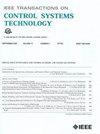Safe Autonomy for Uncrewed Surface Vehicles Using Adaptive Control and Reachability Analysis
IF 3.9
2区 计算机科学
Q1 AUTOMATION & CONTROL SYSTEMS
引用次数: 0
Abstract
Marine robots must maintain precise control and ensure safety during tasks such as navigating narrow waterways, even when they encounter unpredictable disturbances that impact performance. Designing algorithms for uncrewed surface vehicles (USVs) requires accounting for these disturbances to control the vehicle and ensure it avoids obstacles. While adaptive control has addressed USV control challenges, real-world applications are limited, and certifying USV safety amidst unexpected disturbances remains difficult. To tackle control issues, we employ a model reference adaptive controller (MRAC) to stabilize the USV along a desired trajectory. For safety certification, we developed a reachability module with a moving horizon estimator (MHE) to estimate disturbances affecting the USV. This estimate is propagated through a forward reachable set calculation, predicting future states and enabling real-time safety certification. We tested our safe autonomy pipeline on a Clearpath Heron USV in the Charles River, near MIT. Our experiments demonstrated that the USV’s MRAC controller and reachability module could adapt to disturbances like thruster failures and drag forces. The MRAC controller outperformed a proportional–integral–derivative (PID) baseline, showing a 45%–81% reduction in position root mean squared error. In addition, the reachability module provided real-time safety certification, ensuring the USV’s safety. We further validated our pipeline’s effectiveness in underway replenishment and canal scenarios.基于自适应控制和可达性分析的无人水面车辆安全自主
海洋机器人必须保持精确的控制,并确保在狭窄的水道航行等任务中的安全,即使它们遇到影响性能的不可预测的干扰。设计无人水面车辆(usv)的算法需要考虑这些干扰来控制车辆并确保其避开障碍物。虽然自适应控制已经解决了USV控制的挑战,但实际应用是有限的,并且在意外干扰下证明USV的安全性仍然很困难。为了解决控制问题,我们采用模型参考自适应控制器(MRAC)来稳定USV沿着期望的轨迹。为了安全认证,我们开发了一个可达性模块,带有移动地平线估计器(MHE)来估计影响USV的干扰。此估计通过前向可达集计算传播,预测未来状态并启用实时安全认证。我们在麻省理工学院附近查尔斯河的Clearpath Heron USV上测试了我们的安全自主管道。我们的实验表明,USV的MRAC控制器和可达模块可以适应诸如推进器故障和阻力等干扰。MRAC控制器优于比例-积分-导数(PID)基准,显示位置均方根误差降低45%-81%。此外,可达模块提供实时安全认证,确保无人潜航器的安全。我们进一步验证了管道在海上补给和运河方案中的有效性。
本文章由计算机程序翻译,如有差异,请以英文原文为准。
求助全文
约1分钟内获得全文
求助全文
来源期刊

IEEE Transactions on Control Systems Technology
工程技术-工程:电子与电气
CiteScore
10.70
自引率
2.10%
发文量
218
审稿时长
6.7 months
期刊介绍:
The IEEE Transactions on Control Systems Technology publishes high quality technical papers on technological advances in control engineering. The word technology is from the Greek technologia. The modern meaning is a scientific method to achieve a practical purpose. Control Systems Technology includes all aspects of control engineering needed to implement practical control systems, from analysis and design, through simulation and hardware. A primary purpose of the IEEE Transactions on Control Systems Technology is to have an archival publication which will bridge the gap between theory and practice. Papers are published in the IEEE Transactions on Control System Technology which disclose significant new knowledge, exploratory developments, or practical applications in all aspects of technology needed to implement control systems, from analysis and design through simulation, and hardware.
 求助内容:
求助内容: 应助结果提醒方式:
应助结果提醒方式:


